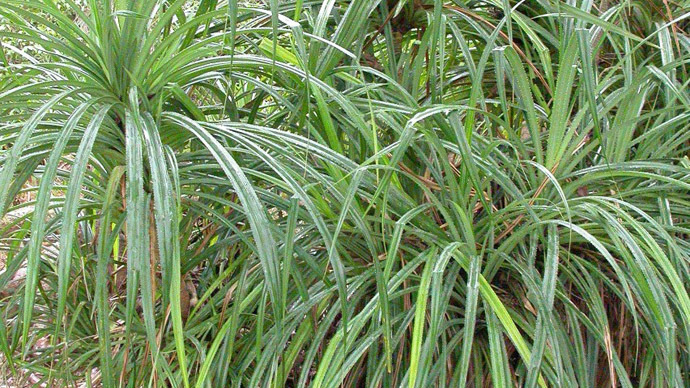Carat clue? African plant points to diamonds beneath ground, scientist says

Diamond prospectors in West Africa finally have a clue where to look for the ‘girl’s best friend’. A US researcher believes that one particular plant could be “an unusual botanical indicator” which grows where there may be diamonds beneath the soil.
Liberia, a major source of ‘blood diamonds’, is home to the
thorny plant whose name sounds like an incantation: pandanus
candelabrum.
Florida International University researcher Stephen Haggerty
claims that the plant grows over rock that may be hiding
diamonds. The researcher wrote in the June-July issue of Economic Geology paper that
following several years of exploration in northwestern Liberia
“an elusive diamond-bearing kimberlite pipe has finally been
located.”

Kimberlite is an igneous rock with a reputation for containing diamonds oftentimes; kimberlite pipes are the key source of mined diamonds. Haggerty says that a “bonus” to the pipe location is that pandanus candelabrum is recognized “exclusively on the pipe and not in eluvium [deposit of soil, dust, etc., formed from the decomposition of rock and found in its place of origin] covering the adjacent kimberlite dikes.”
The plant tends to grow only on the kimberlite-derived soil
(potassium, phosphorous and magnesium-high) which appears at the
top of pipes of the igneous rock.
The researcher, who’s also the chief exploration officer of
Youssef Diamond Mining Company, which owns mining concessions in
Liberia, believes that his discovery could “dramatically
change the exploration dynamics for diamonds in West Africa, as
geobotanical mapping and sampling is cost-effective in tough
terrain.”
1st botanical indicator for diamond-bearing rock: Pandanus candelabrum http://t.co/JJFzCaJRU2http://t.co/UWH8zS8iaPpic.twitter.com/1jFh4Hati6
— JSTOR Global Plants (@JSTORPlants) 4 мая 2015
A geologist specializing in diamond research at the Carnegie
Institution for Science in Washington, DC, Steven Shirey, told
Science that diamond-miners are going to “jump on it like
crazy.”
Miners are aware that particular plants, like haumaniastrum
katangense in Africa or pink flowers of lychnis alpina (found in
the mountains where the soil also contains copper) can tip-off
which rocks lie beneath. According to Haggerty, pandanus
candelabrum is “the first plant to be described that has a
marked affinity for kimberlite pipes.” While kimberlite
pipes are found around the world, pandanus candelabrum is only
found in West Africa.












